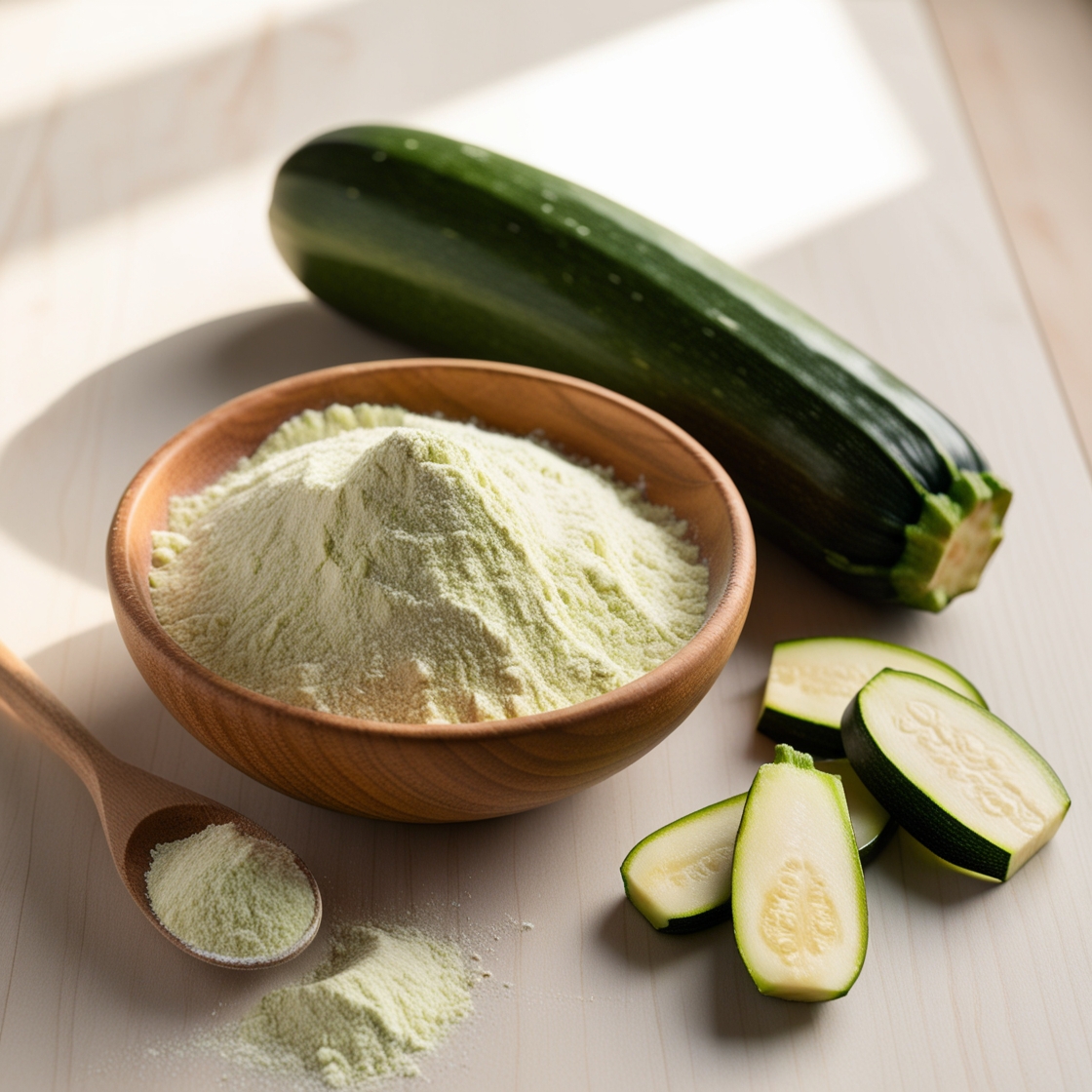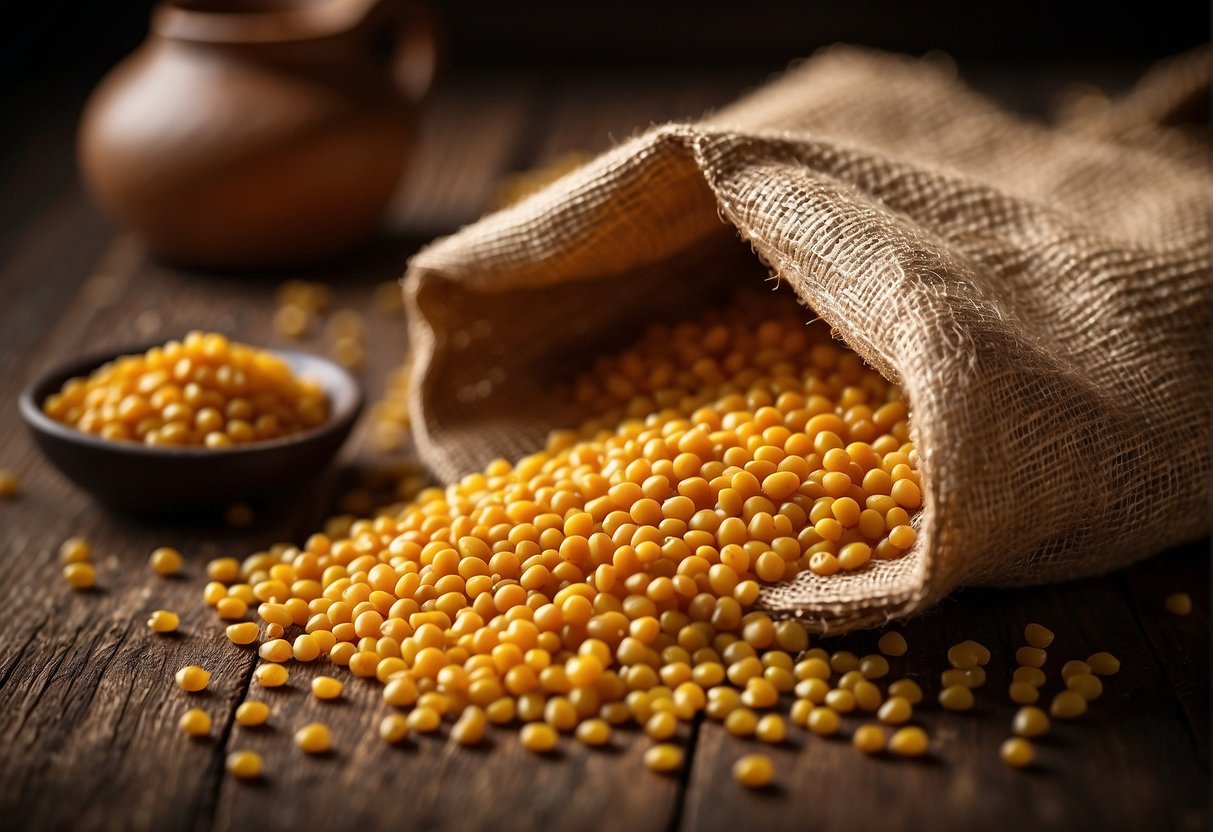I am always excited to write this article because this is an excellent option to traditional wheat flour. This non-cruciferous plant-based flour is fascinating to me, especially after seeing how it transforms both sweet and savory recipes in ways I never expected.
What is Zucchini Flour?
This specialty flour comes from dried and ground zucchini. I first tried making it last summer when I found a great sale on zucchini at the local farmers’ market and decided to experiment with something new. Unlike other vegetable flours from the cruciferous family, this non-cruciferous vegetable flour has a gentler flavor, which works well in both desserts and savory dishes.
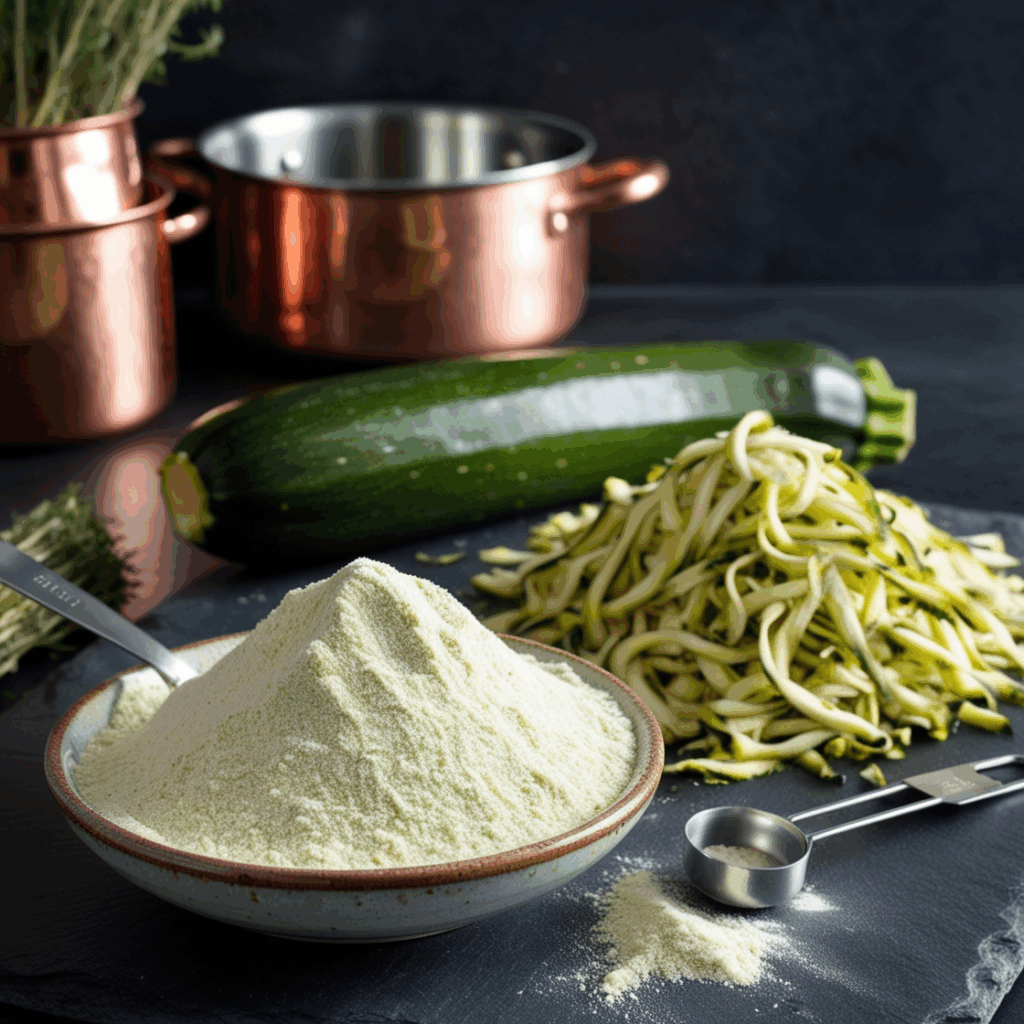
Many people now seek alternatives to regular flour due to gluten sensitivities or dietary preferences. While almond, coconut, and cassava options exist, they each have downsides – some trigger allergies, others cost too much, and many have strong flavors that overwhelm recipes. The zucchini alternative stands apart because it’s affordable, allergen-friendly, and has a subtle taste.
I learned during my research that using vegetables as flour isn’t new. Farming communities, particularly Amish and Mennonite groups, would dry extra vegetables during harvest seasons to use throughout winter. I find it satisfying that we’re rediscovering these practical food preservation methods.
The Nutritional Benefits of This Vegetable-Based Option
I became interested in the nutritional aspects after noticing how my digestion improved when using this flour. Looking into it further, I found it maintains most nutrients from fresh zucchini, just concentrated.
The vitamin content impresses me most – it keeps its vitamins A and C, which support immune function and help maintain healthy skin. The fiber content helps with digestion and creates a satisfying fullness that regular flour lacks. When I make bread with it, I notice I stay full longer compared to wheat-based options.
This non-cruciferous gluten-free flour contains fewer calories and carbohydrates than nut-based alternatives while still working well in recipes. Friends with celiac disease have told me they appreciate having another option besides the usual rice or tapioca flours.
My stepmom, who watches her blood sugar, likes how it doesn’t cause the same spikes as wheat flour. She particularly enjoys how it adds moisture to baked goods without making them heavy. When I explained that it even contains lutein and zeaxanthin for eye health, she started using it in her weekly muffin recipe.
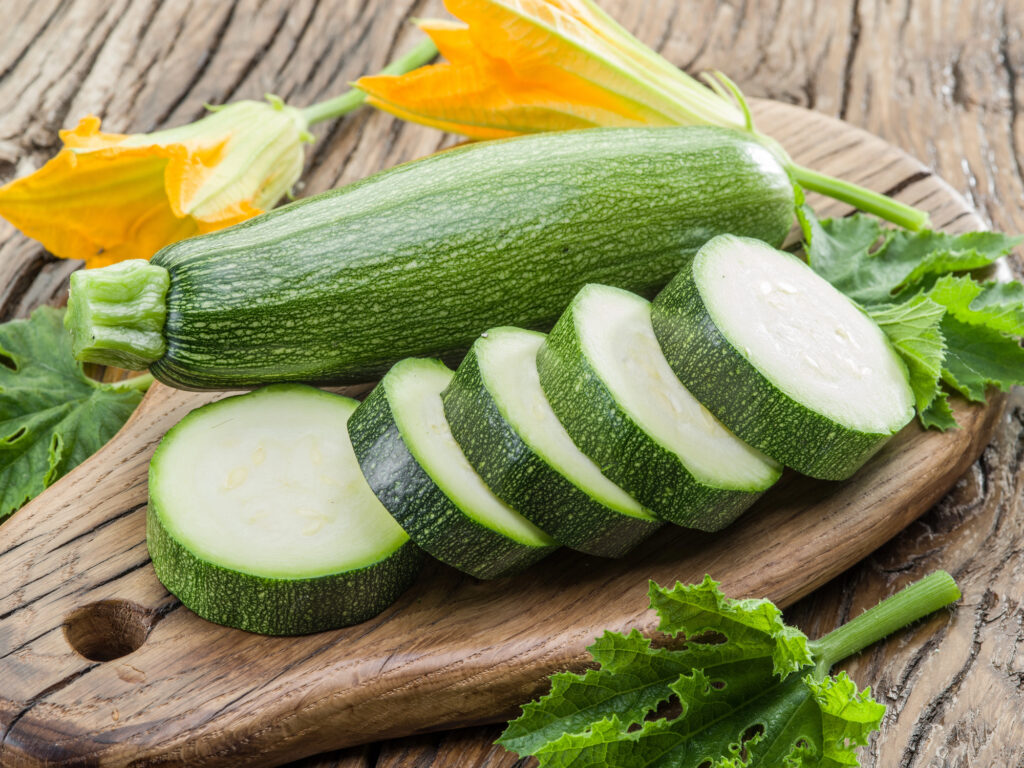
How to Make Zucchini Flour at Home
My first attempt at making this flour turned out badly. I didn’t dry the zucchini thoroughly enough, and ended up with something closer to paste than powder. Through constant practice, I’ve figured out what works.
Selecting Your Zucchini
I’ve tested different sizes and found that larger, more mature zucchinis actually work better for flour. Contrary to what you might expect, they produce less bitter flour and yield more volume. I always peel and remove seeds now, which speeds up drying and creates a finer texture.
Preparation Steps
- Start by washing zucchinis thoroughly under running water
- Peel them – I’ve found the skin sometimes adds a slight bitterness
- Cut lengthwise and scoop out the seeds from larger ones
- Grate using your food processor or box grater
- Squeeze out moisture using clean dish towels – this step saves hours of drying time
Drying Methods
I prefer my dehydrator because it maintains a consistent temperature:
- Spread grated zucchini thinly across the trays
- Set to 135°F
- Leave it for about 10 hours, checking occasionally
If you’re serious about making zucchini flour, investing in a high-quality dehydrator like the Excalibur 9-Tray Dehydrator is a total game-changer. With its spacious trays and precise temperature control, it helps you dry large batches evenly without overcooking. I love how I can set it and walk away — perfect for overnight drying!

Excalibur Electric Food Dehydrator Machine 9-Tray with 26-Hour Timer, Automatic Shut Off Accurate Temperature Control and Fast Drying with 15 Square Feet of Drying Space, 600-Watts, Black
- Large Capacity: Equipped with 9 Excalibur dehydrator trays, this large food dehydrator boasts 15 square feet of drying space
- Versatile Uses: Features a 26-hour dehydrator timer and an adjustable thermostat with a range of 105 to 165 degrees F – low enough for fruits and vegetables but high enough for dehydrating meat
- Low & Slow for Immune Boost: Cooking foods at no higher than 115-118 degrees in a dehydrator preserves nutrients; it’s the perfect dehydrator for food and jerky, as well as dried fruit leather, fruit roll-up p
- Faster & Easier to Use: This meat and fruit dehydrator features exclusive Excalibur Parallex Horizontal Airflow technology, which dehydrates food faster, retains more nutrients, and helps food look and taste better without requiring tray rotation
When you do not have a dehydrator, you can use an oven instead:
- Set it to the lowest temperature (mine goes to 170°F)
- Leave the door cracked open to release moisture
- Spread zucchini on parchment-lined baking sheets
- Check and stir every hour for about 3-4 hours
Grinding Zucchini Flour
Once the zucchini feels completely dry and brittle:
- Add the dried pieces to a blender or food processor
- Pulse until you get a fine powder
- Let it settle before opening the lid – I learned this the hard way after inhaling a cloud of flour
After trying a few blenders, I landed on the Vitamix Explorian — and I’ll never go back. This powerhouse turns dried zucchini into a fine, fluffy flour in seconds. Plus, it handles everything from soups to nut butters, so it earns its keep on my countertop!

Vitamix E310 Explorian Blender, Professional-Grade, 48 Oz. Container, Black
- Variable Speed Control: Ten variable speeds allow you to refine every texture with culinary precision, from the smoothest purées to the heartiest soups
- Pulse Feature: Layer coarse chops over smooth purées for heartier recipes, such as chunky salsas or thick vegetable soups
- 48-ounce Container: Ideal for blending medium batches for small family meals
- Hardened Stainless-Steel Blades: Our aircraft-grade stainless steel blades are designed to handle the toughest ingredients, so from the first blend to the last, you get the same quality results
Storage Tips

I store mine in glass jars with these guidelines:
- Make sure containers are completely dry before adding flour
- Add a few silica packets from vitamin bottles to absorb any moisture
- Keep in a pantry away from heat and light
- Check occasionally for any clumping, which signals moisture
I’ve tried a few different options, and the OXO POP Containers are hands-down the best for keeping homemade flours fresh and dry. The airtight seal clicks closed with one hand (so handy during batch prep!), and the stackable design keeps my pantry neat. They’re perfect for zucchini flour and other gluten-free blends.

OXO Good Grips 5-Piece POP Container Set
- OXO Good Grips 5-Piece POP Container Set is airtight, stackable, space-efficient and now dishwasher safe, making it easy to keep your dry foods fresh and your pantry organized
- Set includes: One (1) 2.1 Qt Container, one (1) 1.5 Qt Container, two (2) 0.9 Qt Containers, and one (1) 0.3 Qt Container
- Push the button to engage the airtight seal. The button doubles as a handle for the lid
- Convenient fill line makes it a cinch to store pantry staples like cereal, flour, sugar, pasta, rice, coffee, nuts and snacks
Culinary Uses and Creative Recipes
Using this flour brings versatility to my kitchen. Last Mother’s Day, I prepared pancakes for our hike. Alissa, my son’s girlfriend, couldn’t believe they contained vegetables. She didn’t hesitate to ask for the recipe immediately.
Baking Applications
This flour works particularly well in:
- Quick breads and muffins
- Pancakes and waffles that stay moist without becoming soggy
- Cookies and brownies where you want extra nutrition without changing flavor
Substitution Guidelines
Through many trials, I’ve found these substitution ratios work best:
- Replace coconut flour
- Substitute for ¼ to ⅓ cup of regular flour since it absorbs more liquid
- Mix with other non-cruciferous flours for balanced texture
Beyond Baking
I use this versatile ingredient outside of baking too:
- Add to soups near the end of cooking for thickening
- Mix with herbs and spices for a coating on fish or chicken
- Blend into pasta dough for extra nutrients
Zucchini Flour Bread Recipe
This bread recipe took several attempts to perfect, but now my family requests it regularly:
Ingredients:
- 1 cup zucchini flour
- ½ cup almond flour
- 3 large eggs
- ¼ cup melted butter
- 1 teaspoon cinnamon
- ½ teaspoon baking soda
- 2 tablespoons maple syrup or honey
- ½ teaspoon vanilla
- ¼ teaspoon sea salt
Instructions:
- Heat oven to 350°F and line a loaf pan with parchment
- Mix all dry ingredients in one bowl
- Whisk eggs, then blend in other wet ingredients
- Combine everything just until mixed
- Bake 30-35 minutes until a toothpick comes out clean
- Cool completely before slicing – it firms up as it cools
The first time I made this bread, it came out too crumbly. Adding a bit of almond flour improved the structure while keeping the moisture from the zucchini base.
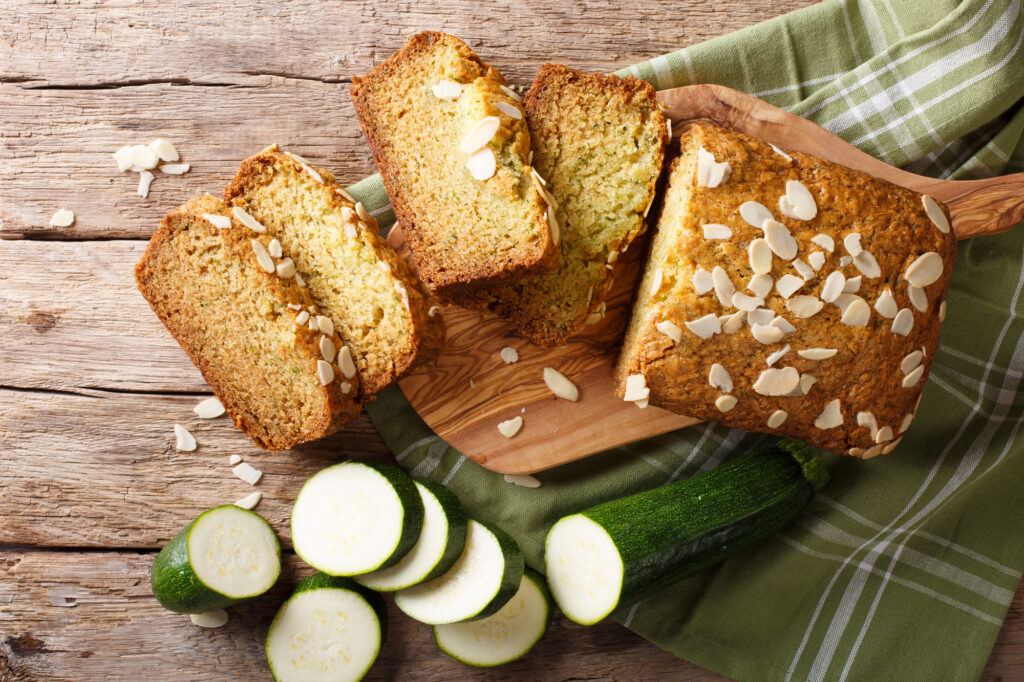
Advantages of This Alternative
After regular use, I’ve noticed several benefits that make this flour stand out.
Cost-Effectiveness
Growing zucchini in my small garden bed produced enough for 5 cups of flour last summer. Even buying zucchini at farmers’ markets costs much less than purchasing specialty flours like almond or coconut varieties.
Allergy-Friendly Properties
When my friend’s daughter was diagnosed with multiple food allergies, I brought over zucchini flour cookies. She was thrilled to find something she could eat that was:
- Free from nuts
- Contained no gluten
- Grain-free
- Lower in oxalates than many vegetable options
Sustainability Factor
This flour offers notable sustainability benefits. Converting surplus zucchini into flour prevents food waste and extends shelf life significantly. Zucchini requires fewer water resources than crops like almonds, making it an environmentally practical choice. Home gardeners and market shoppers alike appreciate having another way to use abundant seasonal harvests.
Flavor Versatility
Unlike some alternative flours with distinctive tastes, this one blends into recipes without overwhelming them. I’ve added it to chocolate cake, bread, and even gravy without anyone noticing.
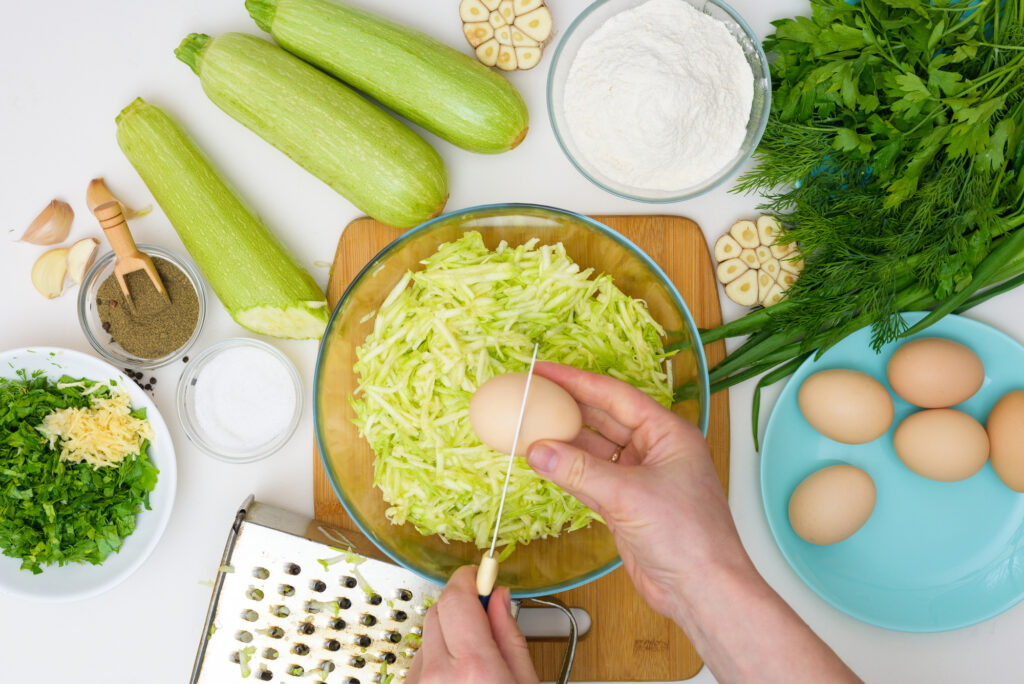
Challenges and Considerations
Despite my enthusiasm, I should mention some limitations I’ve encountered.
Yield Ratios
The first time I made this flour, I was surprised by how little I got from a large zucchini. Because zucchini contains so much water, you need about 5 pounds of fresh vegetables to make just 1 cup of flour. Still, given how affordable zucchini is, especially during summer, the small yield seems reasonable.
Time Investment
Making this flour requires patience. Sometimes I start the dehydrator before bed and finish grinding the next morning. Without a dehydrator, the process takes active attention to prevent burning in the oven.
Texture Variations
My old blender produced a coarser flour than my new one. For finer results, sometimes I sift the flour and regrind any larger pieces. Different zucchini varieties also produce slightly different textures.
Storage Sensitivity
During a particularly humid week last summer, my stored flour developed clumps despite being in a sealed container. Now I add extra silica packets and check it more regularly.
Global Availability of Zucchini
Zucchini is widely available across many regions of the world. This versatile vegetable grows on every continent except Antarctica, though it goes by different names in various locations.
I remember when I was still in the UK, locals referred to it as “courgette,” and many home bakers there create what they call “courgette flour” using similar drying and grinding methods. My friends in Southeast Asia incorporate zucchini in their diet regularly, often using local varieties that are slightly paler but process similarly when making flour.
What makes zucchini particularly accessible is its adaptability to various growing conditions. The plant thrives in diverse environments from backyard gardens to commercial farms. Even in regions with seasonal limitations, zucchini often appears in markets due to its relatively quick growth cycle and generous yield with minimal resource requirements.

Additional Tips from My Experience
After making this flour regularly, I’ve developed some useful practices. Yellow summer squash creates a milder-tasting flour that works wonderfully in desserts where you want to hide the vegetable flavor completely. I’ve found vacuum sealing and freezing preserves freshness for over a year, which helps me manage my larger summer batches.
When I want to create specialty variations, adding dried basil or garlic before grinding produces savory flour perfect for breads and coating proteins. Those larger, less tender zucchinis that aren’t great for eating actually make excellent flour – they’re usually cheaper too, which is an added bonus. For interesting nutritional profiles, I sometimes combine with sweet potato flour which creates a blend with complementary flavors and a beautiful golden color.
Incorporating This Flour into Your Daily Cooking
I began with just a little, adding a tablespoon to pancake batter and working up from there. Now I routinely replace part of the wheat flour in recipes. Last week, I served banana bread to friends without mentioning the secret ingredient. When they commented on how moist it was, I shared my technique. Three people asked for the recipe.
What makes this ingredient special to me is how it bridges nutritious cooking with foods people actually enjoy eating. By adding it to mac and cheese sauce or using it to thicken chicken soup, I boost nutrients without sacrificing flavor. My husband, normally suspicious of “healthy” substitutions, doesn’t even notice it in his favorite cookies. That practical, everyday usefulness makes this flour worth the effort of creating it.
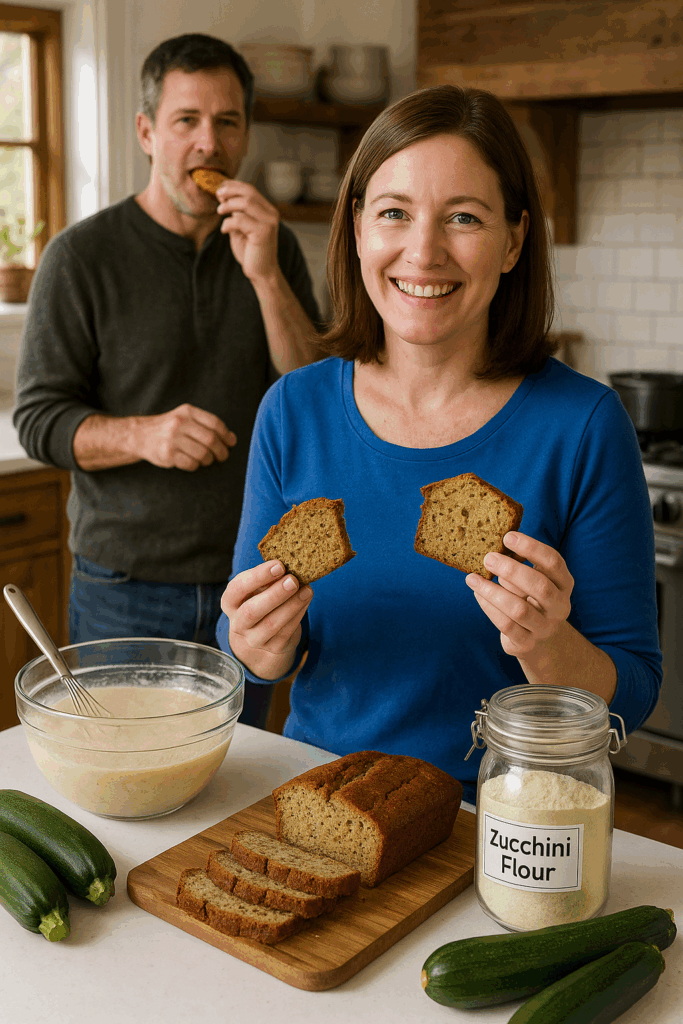
Thoughtful Reflections
Zucchini flour has become a regular part of my cooking routine. I appreciate its nutritional benefits, versatility in recipes, and how it helps reduce food waste from my garden. Whether you follow a specialized diet or simply want to add more vegetables to your meals, this ingredient deserves consideration.
My exploration of this flour began from necessity—too many zucchinis and not enough ways to use them. It’s evolved into a staple I make several times a year. The transformation from garden vegetable to useful pantry ingredient still fascinates me, and the results consistently meet or exceed my expectations.
When your garden overflows or you spot an abundance of zucchini at the market, consider trying this technique. It opens up new possibilities for baking, cooking, and eating well without sacrificing taste or texture.
Have you tried making or cooking with this ingredient? I’m always looking for new recipes and techniques to share.
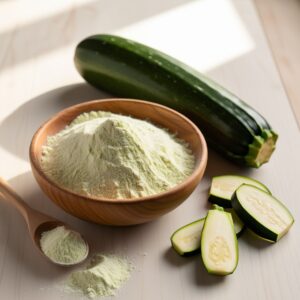
*We may earn a commission for purchases made using our links. Please see our disclosure to learn more.

